Themed collection Materials & Energy in Chemical Science - most popular articles 2021

Pathways to increase the dissymmetry in the interaction of chiral light and chiral molecules
This perspective explores the dissymmetric interaction between circularly polarised (CP) light and chiral molecules. Such interactions are central to many applications from next generation displays to asymmetric photochemical synthesis.
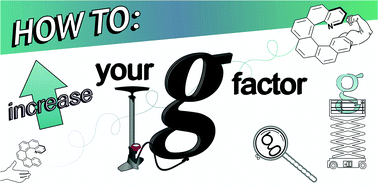
Chem. Sci., 2021,12, 8589-8602
https://doi.org/10.1039/D1SC02335G
Capture of toxic gases in MOFs: SO2, H2S, NH3 and NOx
MOFs are promising candidates for the capture of toxic gases such as SO2, H2S, NH3 and NOx. Understanding the role of different chemical functionalities, within the pores of MOFs, is the key for accomplishing superior captures of these toxic gases.

Chem. Sci., 2021,12, 6772-6799
https://doi.org/10.1039/D1SC01609A
Design of BODIPY dyes as triplet photosensitizers: electronic properties tailored for solar energy conversion, photoredox catalysis and photodynamic therapy
BODIPYs offer a versatile platform to build organic triplet photosensitisers for PDT, TTA upconversion and photocatalysis. Tuning their properties provides the opportunity of replacing heavy-metal complexes and can lead to improved sustainability.
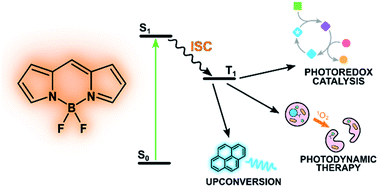
Chem. Sci., 2021,12, 6607-6628
https://doi.org/10.1039/D1SC00732G
Emerging applications for living crystallization-driven self-assembly
The use of crystallization as a tool to control the self-assembly of polymeric and molecular amphiphiles in solution is attracting growing attention for the creation of non-spherical nanoparticles and more complex, hierarchical assemblies.

Chem. Sci., 2021,12, 4661-4682
https://doi.org/10.1039/D0SC06878K
Efficient metal-free organic room temperature phosphors
A summary of the extremely efficient organic phosphors that utilized the best possible ways to manipulate the fate of triplet excitons for achieving a long lifetime along with impressive quantum yield and afterglow properties is provided.
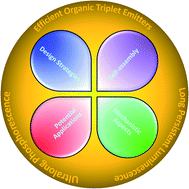
Chem. Sci., 2021,12, 4216-4236
https://doi.org/10.1039/D1SC00446H
Recent advances of group 14 dimetallenes and dimetallynes in bond activation and catalysis
This minireview highlights the recent advances in small molecule activation and catalytic applications of homonuclear dimetallenes, dimetallynes and interconnected bismetallylenes of heavier group 14 elements.
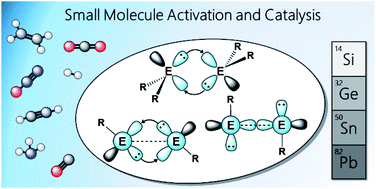
Chem. Sci., 2021,12, 2001-2015
https://doi.org/10.1039/D0SC03192E
Chiral assembly of organic luminogens with aggregation-induced emission
This review highlights the recent development of chiral materials with aggregation-induced emission properties, including their molecular structures, self-assembly and functions.

Chem. Sci., 2022,13, 611-632
https://doi.org/10.1039/D1SC02305E
Increasing structural and functional complexity in self-assembled coordination cages
This review highlights recent strategies towards the rational synthesis of metallo-supramolecular multicomponent systems, the implementation of functionality and the challenge to create multifunctional assemblies in non-statistical fashion.

Chem. Sci., 2021,12, 7269-7293
https://doi.org/10.1039/D1SC01226F
Recent advances in single atom catalysts for the electrochemical carbon dioxide reduction reaction
The electrochemical carbon dioxide reduction reaction (CO2RR) offers a promising solution to mitigate carbon emission and at the same time generate valuable carbonaceous chemicals/fuels.

Chem. Sci., 2021,12, 6800-6819
https://doi.org/10.1039/D1SC01375K
Recent advances of AIE light-up probes for photodynamic therapy
AIE fluorogens provide new opportunities for the development of light-up probes for photodynamic therapy.

Chem. Sci., 2021,12, 6488-6506
https://doi.org/10.1039/D1SC00045D
Can we predict materials that can be synthesised?
Materials discovery is a crucial yet experimentally slow and wasteful process. We discuss how discovery can be accelerated by focusing on making predictions that are synthetically realisable.
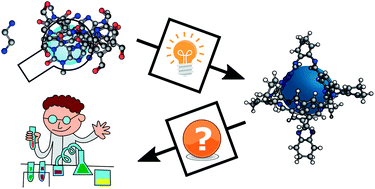
Chem. Sci., 2021,12, 830-840
https://doi.org/10.1039/D0SC04321D
A flavin-inspired covalent organic framework for photocatalytic alcohol oxidation
In this manuscript, we report the development of a novel alloxazine COF inspired by naturally occurring flavin cofactors for photoredox catalysis.
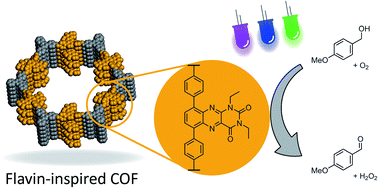
Chem. Sci., 2021,12, 15143-15150
https://doi.org/10.1039/D1SC04143F
Simplifying and expanding the scope of boron imidazolate framework (BIF) synthesis using mechanochemistry
Mechanochemistry enables rapid access to boron imidazolate frameworks (BIFs), including ultralight materials based on Li and Cu(I) nodes, as well as new, previously unexplored systems based on Ag(I) nodes.

Chem. Sci., 2021,12, 14499-14506
https://doi.org/10.1039/D1SC03665C
Water-stable hydrazone-linked porous organic cages
A convenient method for constructing water-stable hydrazone-linked porous organic cages (POCs) with tunable structures has been reported, and such POCs can be used as robust adsorbents for effective removal of various pollutants from water.
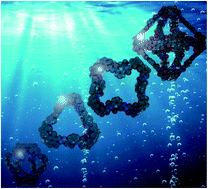
Chem. Sci., 2021,12, 13307-13315
https://doi.org/10.1039/D1SC04531H
A pillar[5]arene-based covalent organic framework with pre-encoded selective host–guest recognition
A novel pillar[5]arene-derived (P5) COF was rationally designed and synthesized, which exhibited superior performance in selective gas adsorption and paraquat binding.
![Graphical abstract: A pillar[5]arene-based covalent organic framework with pre-encoded selective host–guest recognition](/en/Image/Get?imageInfo.ImageType=GA&imageInfo.ImageIdentifier.ManuscriptID=D1SC03680G&imageInfo.ImageIdentifier.Year=2021)
Chem. Sci., 2021,12, 13316-13320
https://doi.org/10.1039/D1SC03680G
Machine learning to tame divergent density functional approximations: a new path to consensus materials design principles
Machine learning (ML)-based feature analysis reveals universal design rules regardless of density functional choices. Using the consensus among multiple functionals, we identify robust lead complexes in ML-accelerated chemical discovery.
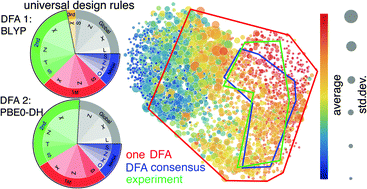
Chem. Sci., 2021,12, 13021-13036
https://doi.org/10.1039/D1SC03701C
Nanoporous ultra-high-entropy alloys containing fourteen elements for water splitting electrocatalysis
Nanoporous ultra-high-entropy alloys containing 14 elements (Al, Ag, Au, Co, Cu, Fe, Ir, Mo, Ni, Pd, Pt, Rh, Ru, and Ti) were obtained by dealloying. The products showed excellent electrocatalytic performance for water splitting in acidic media.

Chem. Sci., 2021,12, 11306-11315
https://doi.org/10.1039/D1SC01981C
Synthesis and enantioseparation of chiral Au13 nanoclusters protected by bis-N-heterocyclic carbene ligands
A series of chiral Au13 nanoclusters were synthesized via the direct reduction of achiral dinuclear Au(I) halide complexes ligated by ortho-xylyl-linked bis-N-heterocyclic carbene (NHC) ligands.
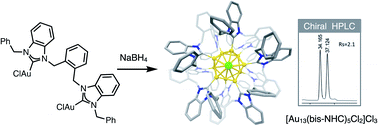
Chem. Sci., 2021,12, 10436-10440
https://doi.org/10.1039/D1SC03076K
Infrared crystallography for framework and linker orientation in metal–organic framework films
Polarization-dependent infrared spectroscopy of oriented metal organic framework films fills the information gap left by diffraction methods and gives access to the orientation of the aromatic linker and initial orientation of ultra-thin films.
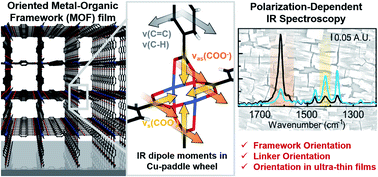
Chem. Sci., 2021,12, 9298-9308
https://doi.org/10.1039/D1SC02370E
Molecular design of thermally activated delayed fluorescent emitters for narrowband orange–red OLEDs boosted by a cyano-functionalization strategy
The first example of narrowband orange–red MR-TADF emitters has been developed, which realizes a record-high EQE of 33.7% in OLEDs.
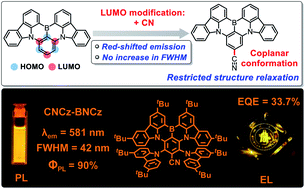
Chem. Sci., 2021,12, 9408-9412
https://doi.org/10.1039/D1SC02042K
Low power threshold photochemical upconversion using a zirconium(IV) LMCT photosensitizer
The LMCT photosensitizer Zr(MesPDPPh)2 paired with DPA-based acceptors enabled low power threshold photochemical upconversion with record-setting quantum efficiencies.

Chem. Sci., 2021,12, 9069-9077
https://doi.org/10.1039/D1SC01662H
Beyond generative models: superfast traversal, optimization, novelty, exploration and discovery (STONED) algorithm for molecules using SELFIES
Interpolation and exploration within the chemical space for inverse design.

Chem. Sci., 2021,12, 7079-7090
https://doi.org/10.1039/D1SC00231G
Efficient electroreduction of CO2 to C2+ products on CeO2 modified CuO
CO2 can be efficiently converted into C2+ products on CeO2 modified CuO catalysts and the faradaic efficiency could reach 75.2% with a current density of 1.21 A cm−2.

Chem. Sci., 2021,12, 6638-6645
https://doi.org/10.1039/D1SC01117K
In vivo oral insulin delivery via covalent organic frameworks
We report the successful use of a gastro-resistant covalent organic framework for in vivo oral delivery of insulin.
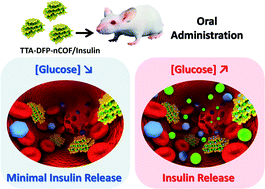
Chem. Sci., 2021,12, 6037-6047
https://doi.org/10.1039/D0SC05328G
Direct CO2 capture and conversion to fuels on magnesium nanoparticles under ambient conditions simply using water
We demonstrated the use of magnesium nanoparticles (and bulk) to convert CO2 (pure & also from the air) to methane, methanol, formic acid and green cement without external energy within a few minutes, using only water as the sole hydrogen source.

Chem. Sci., 2021,12, 5774-5786
https://doi.org/10.1039/D1SC01113H
Non-concentrated aqueous electrolytes with organic solvent additives for stable zinc batteries
Involvement of dimethyl carbonate and trifluoromethanesulfonate anions in a hybrid aqueous electrolyte enables the formation of a new Zn2+-solvation structure and a ZnF2–ZnCO3-rich interphase that stabilizes the Zn battery chemistry.
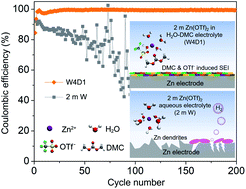
Chem. Sci., 2021,12, 5843-5852
https://doi.org/10.1039/D0SC06734B
Machine learning dielectric screening for the simulation of excited state properties of molecules and materials
Machine learning can circumvent explicit calculation of dielectric response in first principles methods and accelerate simulations of optical properties of complex materials at finite temperature.
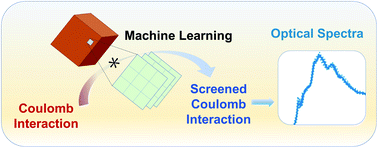
Chem. Sci., 2021,12, 4970-4980
https://doi.org/10.1039/D1SC00503K
Phenazines as model low-midpoint potential electron shuttles for photosynthetic bioelectrochemical systems
Phenazines were explored as novel low-midpoint potential molecules for wiring cyanobacteria to electrodes.

Chem. Sci., 2021,12, 3328-3338
https://doi.org/10.1039/D0SC05655C
Fast oxygen ion migration in Cu–In–oxide bulk and its utilization for effective CO2 conversion at lower temperature
Efficient activation of CO2 at low temperature was achieved by reverse water–gas shift via chemical looping (RWGS-CL) by virtue of fast oxygen ion migration in a Cu–In structured oxide, even at lower temperatures.

Chem. Sci., 2021,12, 2108-2113
https://doi.org/10.1039/D0SC05340F
Three-component three-bond forming cascade via palladium photoredox catalysis
Highly modular three-bond three-component cascade featuring palladium as dual photoredox/cross coupling catalyst.

Chem. Sci., 2021,12, 1810-1817
https://doi.org/10.1039/D0SC05551D
Cooperative assembly of H-bonded rosettes inside a porphyrin nanoring
Mixing barbiturates and pyrimidines equipped with pyridine ligands to leads to self-assembly of a hexadentate rosette ligand, which is complementary to a hexameric zinc porphyrin macrocycle.

Chem. Sci., 2021,12, 1427-1432
https://doi.org/10.1039/D0SC06097F
About this collection
This specially curated collection pulls together some of the most read, cited and shared articles from 2021 in the field of materials and energy chemistry. The collection highlights some outstanding contributions ranging from machine learning models and algorithms for materials discovery to zinc batteries to COFs for in vivo oral insulin delivery, and as with all Chemical Science articles – they are all completely free to access and read. We hope you enjoy browsing through this collection.
If a particular article has inspired you, do feel free to share on social media using the buttons on each article landing page and use our hashtag: #ChemSciMostPopular